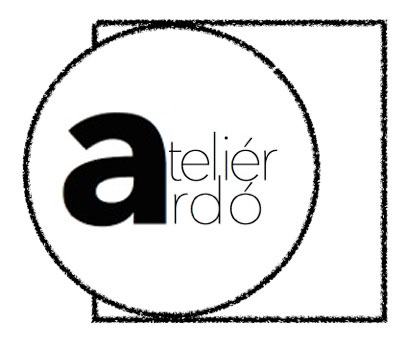A litmus test of images of Britain in the mind*
When drawing a portrait of Britain today with 25 international artists, how does Brexit fit in?
Zsuzsanna Ardó
“What comes to your mind when you hear the word Britain?
How would you visualise that idea in a simple drawing?”
These were the two questions I asked the 25 artists from around the world who participated in an artist symposium hosted by UNESCO in Andorra this past July. It was a time when the Brexit saga was producing some of its most spectacular twists and turns to date.
During this UNESCO artist residency, each artist was invited to give a presentation about the country we were representing. Artist residencies often include talks by the artists, but normally about their practice and ways of working, not about their country of residence. This was different. The majority of these presentations were non-participatory. Information was processed in a passive receiving mode: listening and looking at photos or ‘why come and visit’-type videos advertising the country.
As the representative of Britain, I had first thought to run the gamut from English language, art, literature, and humour to postage stamps, universities, longest democracy, industrial revolution, trains, electricity, capitalism and modern science… and so on. Then it occurred to me to go straight for the human factor, touching on Bacon, Darwin, Turing, Watt, or my hero, Faraday. Or perhaps just stick to the humble ‘stuff of life’: bicycles, flush toilets, cash dispensers…
I unticked each approach as they floated through my mind. How can one highlight the many layers of Britain for an internationally mixed group of artists at the climax (so far) of the Brexit saga/?
The more I thought about it, the more it seemed liked an engaging and creative approach would be for me to reverse the flow of communication. After all, my audience was a group of fellow artists. They were used to being creative and to responding creatively. And they were all familiar with Britain.
So I asked them my two questions.
The resulting collection of this litmus test of Britain’s visual imprint can hardly be called representative. However, this modest sample of 25 artists offered a rich identity mixture, a reasonable pool in terms of gender, ethnicity, race, class, geography, cultural backgrounds and age between approximately 20-60. Who are you – identity vortex, my recent meditation on identities, moved us into this exploration.
Drawing Britain
We arranged ourselves in a circle, ready to look at each other’s images and work through them through guesswork, drawing on our knowledge of visual language and previous understanding of Britain.
Fish and chips – along with draught beer – placidly made its entrance through sketches by artists from Tunisia and El Salvador. This traditional British working class staple is fairly recent, only a couple of hundred years old. Nonetheless, it has achieved a remarkable career on the culinary palate of our planet. London’s Western Sephardic Jews probably introduced this edible emblem of Britishness to Britain. The immigrant food quickly became a British working class staple, only to proceed to conquer the palate of much the world. This ‘Britishness icon’ has been also climbing up the social ladder. It has become ‘cool’ (kind of retro?) at classy social gatherings, such as receptions and screenings at the British Film Academy.
Our communal immersion in music, with considerable zest for British and/or English-speaking music, made its natural metamorphosis into several of the drawings. A punk portrait by a Hungarian artist, and David Bowie by an Andorran artist. The names of Led Zeppelin, Pink Floyd, Deep Purple, Black Sabbath, Judas Priest, NWOBHM (New Wave of British Heavy Metal), Def Leppard intertwined in a dynamic graphic constellation.
Then there was ‘Royal Britain’ and the British Empire. Several drawings, each with a different filter. Artists from Congo, the Caribbean, India and El Salvador referenced the imperial aspect of ‘Britishness’. The artist from Trinidad and Tobago sketched Lady Diana as the first to come to her mind when thinking of Britain. The Congolese artist depicted the queen eating the riches of Africa. The list of British colonies in Africa is indeed rather long – but it does not include the Congo. The artist seemed to be thinking in terms of the continent rather than the countries it has been divided into.
Image for 'drawing Britain' by Néstor Alvarez Garcia (Cuba). Used with permission, all rights reserved.
The artist from India presented me with an image of what he called ‘The Royal Blue’. The image features a healthy, well-grown plant as well as a few underdeveloped plants underneath it. Although they all share the same soil, the distressed plants hardly reach a quarter way up the flourishing, centrally positioned plant. Yet all plants are ‘equalised’ by their colour: royal blue.
Britain’s European commitment was imagined through Churchill. The Slovak artist, with his Central European sensitivity, drew an image of Churchill and Europe, and highlighted in his comments Churchill’s decisive role in protecting Europe from Nazi Germany. The artist from El Salvador referenced Churchill by a plane dropping bombs, explaining to me with passion that he saw Churchill as a seminal element of what Britain is about.
The Chinese artist painted a British seascape, the Macedonian artist a map of Britain, the Azeri artist a colourful constellation of brollies. Austin, Blake, Defoe, Dickens, Thackeray, Wordsworth and other members of British literary iconography stayed backstage. British literature was marked by Harry Potter’s hat, sketched by the Maltese artist.
Not a single artist brought out the more traditional, high-minded ideas of Britishness, such as tolerance, inclusivity, democracy and the notion of layered identities. And not a single artist sketched Britain as Brexit.
For them, the unimaginable remained unimagined.
We shall see how art really correlates with reality out there.
©Zsuzsanna Ardó
What is your image of Britain in the context of Brexit? Send your drawing and a line of explanation to the author via the contact page on www.ardo.org.
Published by openDemocracy.net 3rd September 2018.
